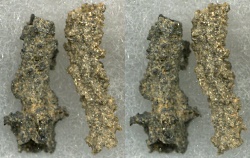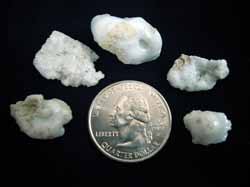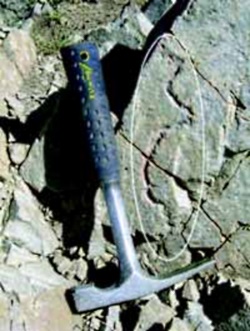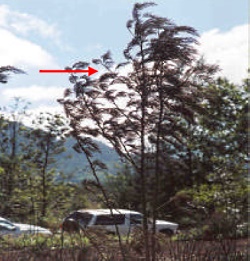
Wildfires hit record highs this year in the Western U.S. There can be arguments blaming Climate Change or Forest Management. Were they caused by human carelessness or natural causes such as lightning? Take your pick. But the results were tragic.
Through August this year, Utah has had nearly 1,300 fires which burned nearly a quarter million acres and cost $100 million dollars.
Nationally, 90% of wildfires are human-caused from unattended campfires, discarded cigarettes, mismanaged debris fires and planned acts of arson. And the cost of those fires exceeded $5 billion dollars over the last 10 years. From January to August in 2018 there were nearly 39,000 different fires that burned over 5 million acres.
Much has been said about those tragic statistics that affect the loss of human life, the destruction of developed properties, the discomforts of evacuations, and the enormous costs and dangers of fighting fires as the horrible results of these runaway infernos. But, what about next year? Will the drought continue? Will the climate continue to set record temperatures?

Courtesy & Copyright Friend Weller, Photographer
One of the consequences that has not been discussed much is the loss of millions of trees. What can we expect when living trees are turned into burned stumps and ashes?
The major greenhouse gas in our atmosphere is Carbon Dioxide. It is called a green house gas because it warms the earth’s temperature. Carbon dioxide is produced by the burning of fossil fuels or trees, chemical reactions such as the manufacture of cement, and the exhaling of animals. It is removed from the atmosphere when it is absorbed by land-plants and the ocean as part of the biological carbon cycle. The role the ocean plays in the carbon cycle is a topic for another program.
It is the loss of trees that we will consider now.
I will mention only a few of the many benefits trees provide.
You may recall from biology class that the trees take-in carbon dioxide and release oxygen. Forest fires require oxygen to burn, and we require oxygen to live. This year, we have already lost 5 million acres of oxygen production.
There are trees, such as the Lodgepole Pine, which have serotinous cones which release their seeds during the intense heat of forest fires. But it will take 40 years for those seeds to
grow into mature trees.
Another consideration is the loss of trees along hillsides and mountain slopes. When rain or snow hits those barren areas there can be massive soil erosion. This not only pollutes the streams and rivers below, but eliminates the top layer of soil where new seeds would best survive.
Besides the loss of human homes, there is the loss of wildlife habitat to consider. IF animals were able to escape massive fires, they must then find suitable habitat, which may encroach on human developments.
Then there is the loss of shade. Barren land will be more susceptible to collecting heat from the sun’s rays, which then will cause more heating of the atmosphere.
So, what can we do about this? First, be extremely careful with fire; Second, plant trees in your communities; Third, contact your local Ranger District or U.S. Forest Service to see if you can volunteer in tree planting projects.
This is Ron Hellstern, and I am Wild About Utah.
Credits:
Images: Courtesy USDA Forest Service,
https://www.srs.fs.usda.gov/compass/2013/05/28/climate-change-and-wildfire/
Audio: Contains audio courtesy
Freesound.org, Sound provided by Dynamicell
https://freesound.org/people/Dynamicell/sounds/17548/
Text: Ron Hellstern, Cache Valley Wildlife Association
Job & Volunteering
USDA Forest Service Offices:
Region 4: Intermountain Region
Federal Building
324 25th Street
Ogden, UT 84401
801-625-5605
[Job & Volunteering] Connections, https://www.fs.usda.gov/main/r4/jobs
Volunteer Opportunities, https://www.fs.usda.gov/main/r4/jobs/volunteer
Volunteer, TreeUtah, https://treeutah.org/volunteer/
Outka-Perkins, Lisa, Welcome to the Forest Service: A Guide for Volunteers, USDA Forest Service, Feb 2009,
https://www.fs.fed.us/t-d/pubs/pdfpubs/pdf09672813/pdf09672813dpi72.pdf
Additional Reading
Boling, Josh, Fire, Wild About Utah, August 13, 2018, https://wildaboututah.org/fire/
Strand, Holly, Investigating the Causes of Wildfires, Wild About Utah, Aug 15, 2013, https://wildaboututah.org/investigating-the-causes-of-wildfires/
Larese-Casanova, Mark, Wildfires in Utah, Wild About Utah, July 26, 2012, https://wildaboututah.org/wildfires-in-utah/
Preparing Home and Property for Wildlife, A Proactive Approach, Utah Living With Fire, Salt Lake City, UT, https://www.utahlivingwithfire.com/
Live Worldwide Network for Lightning and Thunderstorms in Real Time, Blitzortung, https://en.blitzortung.org/live_lightning_maps.php?map=30





